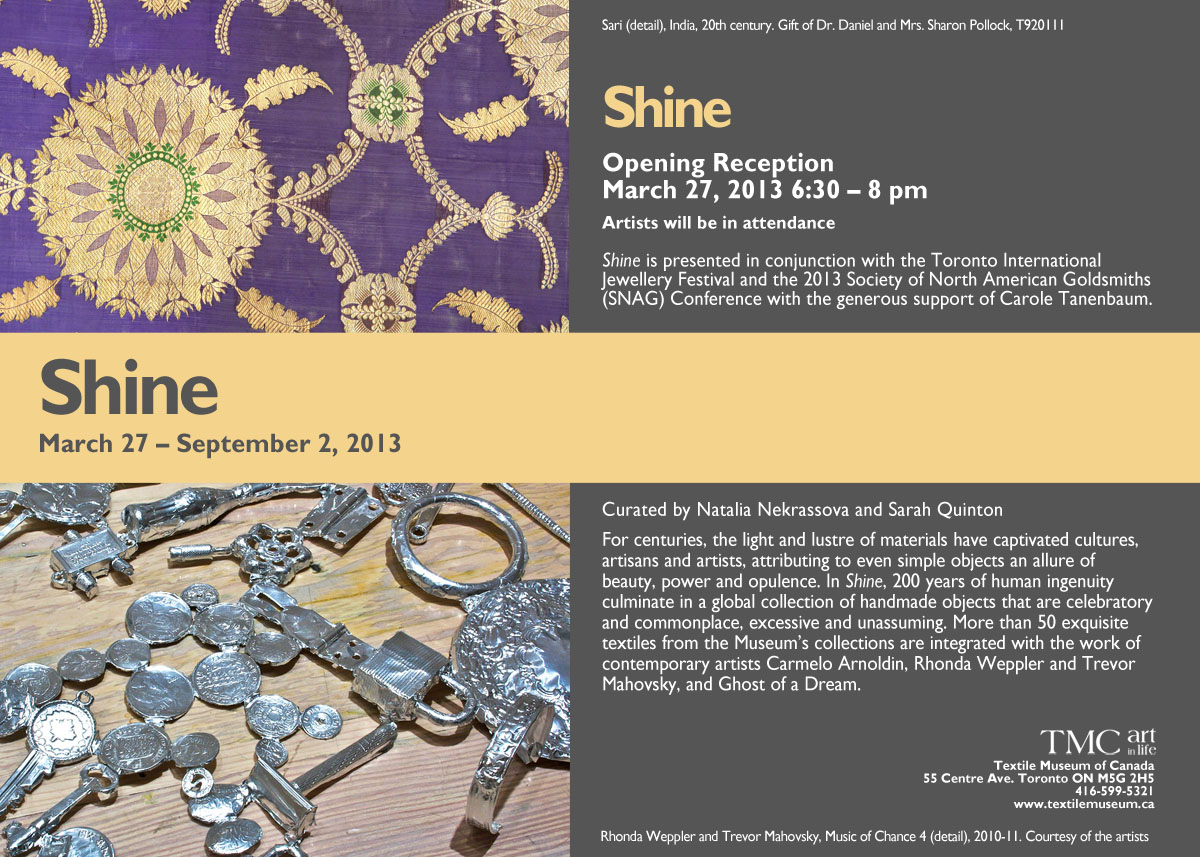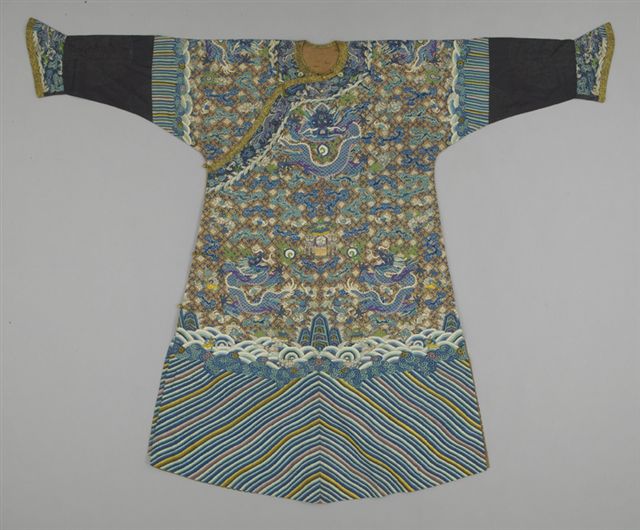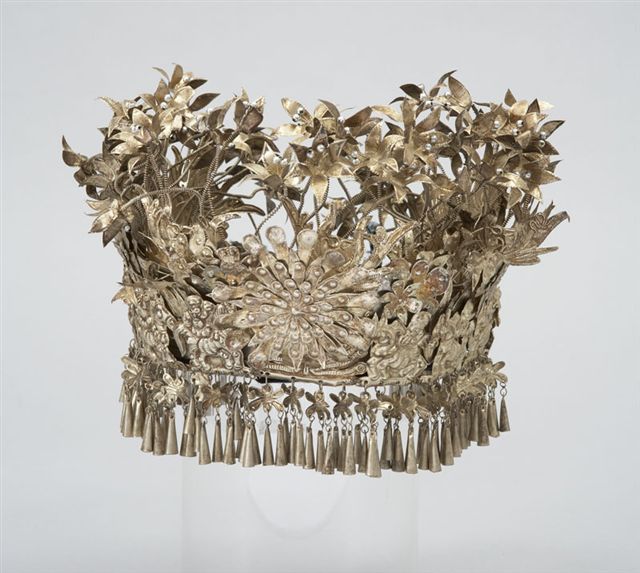Search for:
ASIAN
CANADIANS
> Museums
Textile Museum, Toronto
Invitation to SHINE Exhibition
Textile Museum, Toronto
March 27th to September 2nd, 2013

Highlights from SHINE Exhibition
In the highly structured society of Imperial China clothing was an important and well appreciated means to visualize the structural divisions and to regulate social behaviour thus contributing to harmony in society. Textiles worn by superiors created images of imperial authority and reflected a Chinese worldview where the ruler played a central part in upholding a hierarchic and ordered universe and where his moral actions ensured heaven's benevolence. Imperial official and ceremonial costume was the brightest expression of this concept.
During the Qing dynasty (1644-1911) court garments were decorated according to an official hierarchy of colours and symbols. Strictly organized symmetrical composition of symbolic motifs on an official and semi-official court robe was a representation of the universe in its order and harmony, with water (ocean), the earth (mountains) and air (heavens) being its primary elements. The design of a silk robe displayed the status as well as virtues of the wearer, the emperor and his officials. Along the hem of an official robe, mountain peaks rise above turbulent waves, a motif that carried many allusions, including the ability of the ruler to tower over his subjects and his strengths and endurance; dragons on the gold background symbolize the dynamic energy of the universe and the imperial authority.

Gold, as colour and as material, had a deep symbolic meaning when used on official robes and accessories of the Chinese imperial court; its abstract shine represented the air/heavens as a substance and a balancing force of the universe. It also demonstrated and symbolized the power, authority and the riches of the emperor. When used for decorating festive clothing it was believed to have auspicious powers. The gold thread made from gold leaf on lacquer paper strips wrapped around the silk core was used for weaving and for couching. Silk and gold were local.
 <<
top
<<
top
 The project was made
possible with the support of the
The project was made
possible with the support of the
Department
of Canadian Heritage through the Canadian Culture Online Strategy
The Acrobat Reader
is available free from 